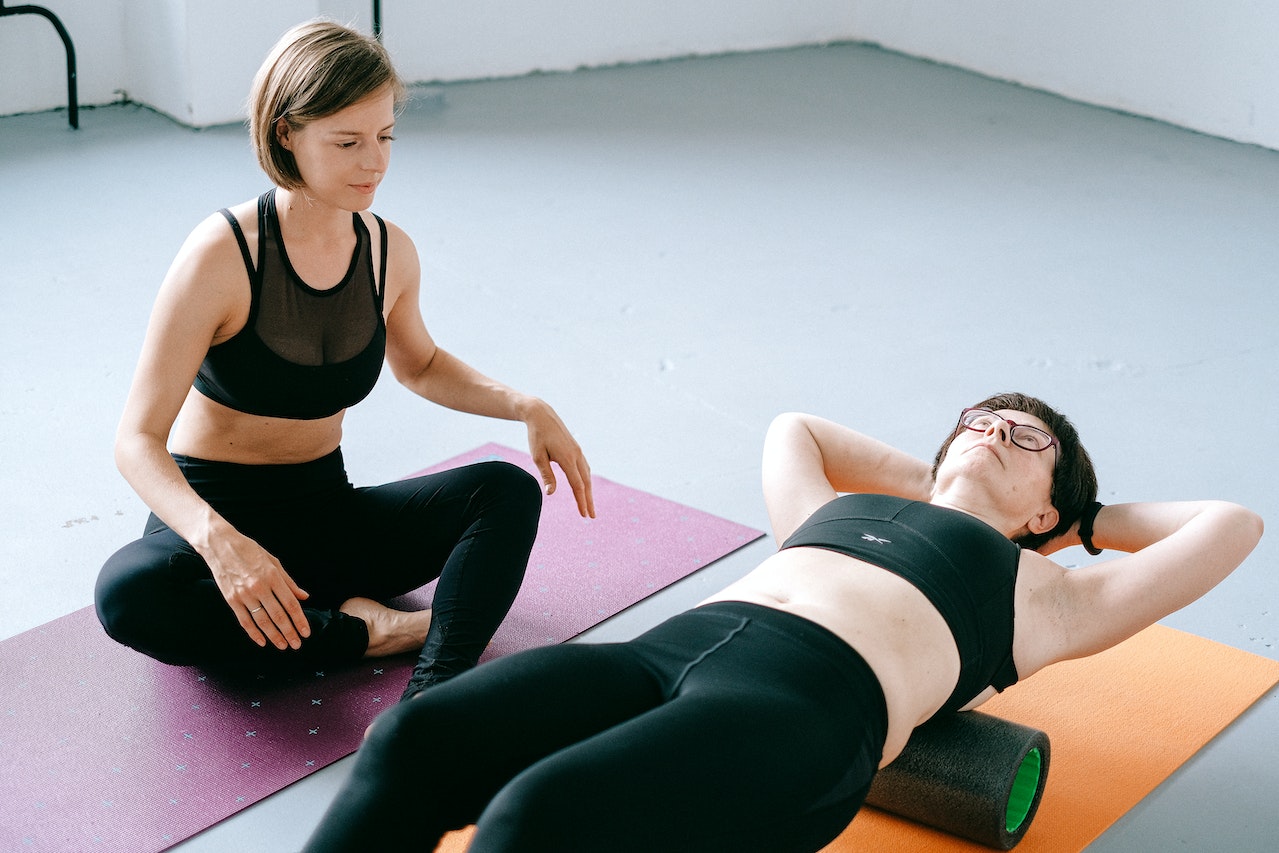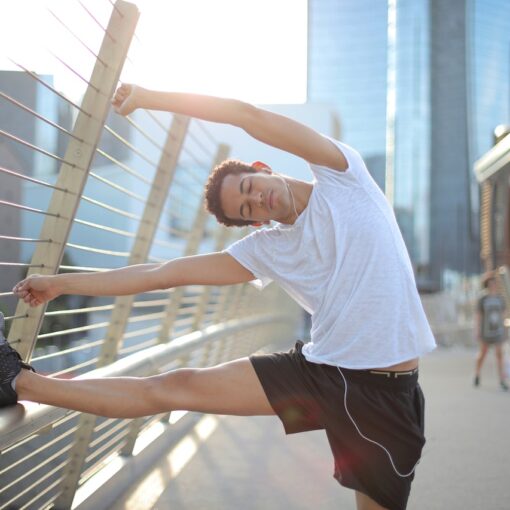Foam rolling is a popular self-massage technique that has gained widespread recognition for its ability to speed up recovery and improve muscle function after a workout. Utilizing a foam roller, this practice focuses on applying pressure to specific muscle groups to alleviate tension, increase flexibility, and enhance overall performance. From seasoned athletes to fitness enthusiasts, foam rolling can be a valuable addition to anyone’s post-workout routine, promoting better muscle health and reducing the risk of injury.
When using a foam roller, it is essential to understand the proper techniques to maximize its benefits and protect your body from potential harm. By targeting specific muscle groups and dedicating adequate time to each area, you can effectively release knots and tension, ultimately improving your range of motion and muscular function. Be sure to focus on the muscles you used during your workout, as well as those above and below these muscle groups, spending about one minute per area without exceeding two minutes on a particular muscle group.
Basics of Foam Rolling
What is Foam Rolling?
Foam rolling is a self-myofascial release (SMR) technique that involves using a cylindrical foam roller to apply pressure on specific muscle groups. It is often used as a pre-workout warm-up or post-workout cool-down activity to help alleviate soreness, promote relaxation, and improve muscle flexibility.
Fascia and Muscles
Our muscles are surrounded and supported by a soft, connective tissue called fascia. This tissue aids in muscle movement and provides overall structural integrity to the body. When we engage in physical activities, the fascia can become tight or develop knots and trigger points, resulting in muscle soreness and restricted movement.
Foam rolling helps to break up these knots and release tension within the fascia. This, in turn, alleviates muscle soreness and enhances their flexibility and range of motion.
To foam roll effectively:
- Select appropriate foam roller for your needs (varying sizes and densities are available)
- Roll each muscle group for about one minute, focusing on the muscle groups used in your workout or any area experiencing tightness or soreness
- Move slowly and use long strokes targeting knots or trigger points of tension
- Pause and maintain moderate pressure on the trigger point for 30 to 60 seconds, allowing the muscle to release tension
Incorporating regular foam rolling sessions into your fitness routine can help with muscle recovery and maintain optimal muscle function. It is essential to listen to your body and adjust your foam rolling techniques accordingly to ensure optimal results.
Types of Foam Rollers
Density and Material
Foam rollers come in various densities, which can affect the intensity of the massage and the durability of the roller. Generally, there are three levels of density:
- Soft: These are ideal for beginners, as they’re gentle on sore muscles and offer a comfortable massaging experience.
- Medium: This is a good balance between soft and firm, providing moderate pressure and a bit more intensity than soft rollers.
- Firm: Suitable for experienced users, they provide the most intense massage and are more durable than their softer counterparts.
The most common material used for foam rollers is EVA foam, which provides durability, adequate support, and a comfortable massaging experience.
Size and Shape
The size and shape of a foam roller can have an impact on the way it targets specific muscle groups and the ease of use. Some common sizes and shapes include:
- Standard size: Most rollers are 5 or 6 inches in diameter, providing a comfortable height for easing your body onto and then rolling under control. They usually come in lengths of 12, 18, or 36 inches, which affect their portability and the area they can cover.
- Half-round foam roller: A foam roller that has been cut in half lengthwise. It provides a less intense massage and is great for balance exercises and targeting smaller muscles.
- Compact: These rollers are shorter in length, typically around 4-12 inches, making them easy to travel with and ideal for smaller muscle groups.
Texture and Special Features
Foam rollers can have various surface textures, which can enhance the massage and target specific muscle tissues. Some common textures include:
- Smooth: These rollers have a simple, even surface that provides consistent pressure across the targeted area.
- Grid or ridged: These rollers have a patterned surface with grooves and bumps, allowing for a more varied and targeted massage experience.
Special features include:
- Vibrating foam rollers: These rollers have a built-in vibration feature, which can help enhance muscle relaxation and stimulate blood flow.
- Hollow core rollers: They have an empty center, providing a lighter weight and allowing for more targeted pressure.
To use a foam roller effectively, locate the sore or tight muscle area, slowly lower your body onto the roller, and hold the position for 20-30 seconds, applying moderate pressure REI Co-op.
Foam Rolling Techniques
Foam rolling is a popular method for easing muscle tightness and improving range of motion. By applying pressure to specific points on your body, you can aid in the recovery of muscles and assist in returning them to normal function. In this section, we will discuss three main techniques for foam rolling: Self-Myofascial Release, Stretching, and Range of Motion.
Self-Myofascial Release
Self-myofascial release (SMR) is a technique that involves using a foam roller to apply pressure to tight spots or “knots” within muscles. These tight spots are commonly referred to as trigger points and can be a cause of muscle pain and reduced range of motion. To perform SMR on a foam roller:
- Place the foam roller under the target muscle group
- Roll slowly until you find a tender area
- Maintain pressure on the trigger point for 30-60 seconds
- Gradually increase the pressure as the muscle starts to release
SMR can be beneficial for both men and women, helping to alleviate muscle tightness and promote overall muscle health 1.
Stretching
Using a foam roller for stretching can help increase flexibility and reduce muscle tightness. To perform stretching with a foam roller:
- Place the foam roller under the target muscle group
- Use your body weight to create pressure, allowing the muscle to stretch
- Hold the stretch for 20-30 seconds
- Repeat on other areas of the muscle or other muscle groups as needed
This method of stretching can be especially helpful in improving range of motion and reducing the risk of injury during physical activity.
Range of Motion
Improving range of motion is essential for overall muscle health and can be achieved using a foam roller. Here’s how to perform range of motion exercises with a foam roller:
- Begin by placing the foam roller under the target muscle group
- Slowly roll the muscle group over the roller to work through the full range of motion
- Repeat this process on multiple muscle groups, working to cover the entire body
These range of motion exercises can help to both warm up your muscles before a workout and promote recovery after a workout.
Incorporating these foam rolling techniques into your routine can help to alleviate muscle tightness, improve flexibility, and enhance overall muscle function for both men and women. Be sure to consult with a healthcare professional or certified fitness trainer if you are unsure of how to perform these techniques or if you have any pre-existing conditions.
Key Muscle Groups to Target
When using a foam roller for recovery and increased flexibility, it’s essential to target the major muscle groups. In this section, we’ll discuss which muscle groups to focus on and how to properly foam roll them.
Upper Body and Shoulders
The upper body, including the shoulders, can hold a lot of tension, making these muscle groups important for foam rolling. Key areas to focus on include:
- The deltoids (shoulder muscles)
- The trapezius (upper back and neck)
Gentle, controlled rolling can help alleviate muscle tightness and improve range of motion in the shoulders and upper back.
Back and Glutes
Lower back, mid-back, and glutes are crucial areas to address while foam rolling. These muscle groups support your posture and are responsible for a lot of daily movement. Focus on the following muscles:
- The latissimus dorsi (mid-back)
- The erector spinae (lower back)
- The gluteus maximus, medius, and minimus (glutes)
By rolling these areas, you can alleviate stiffness and release tension, promoting better overall mobility.
Quads and Hamstrings
The quadriceps and hamstrings are large muscle groups in the thighs responsible for movement in the lower body. They’re heavily involved in activities like walking, running, and jumping. Here are the areas to focus on:
- The rectus femoris, vastus lateralis, vastus medialis, and vastus intermedius (quadriceps)
- The biceps femoris, semitendinosus, and semimembranosus (hamstrings)
Foam rolling these muscle groups can help improve flexibility while decreasing soreness and muscle tightness.
Calves and Feet
The calves and feet support your entire body weight and are crucial for stability and locomotion. Foam rolling these areas can help improve mobility and reduce discomfort. Key muscles to focus on include:
- The gastrocnemius and soleus (calves)
- The plantar fascia (foot)
When foam rolling your calves and feet, use gentle pressure and hold each tender area for 20-30 seconds to help release tightness and enhance flexibility.
Common Foam Rolling Mistakes and How to Avoid Them
Not Warming Up Properly
Foam rolling on a “cold” muscle, which means a muscle that hasn’t been warmed up through activity, can increase the risk of bruising and injury1. Therefore, it’s crucial to perform a light warm-up such as walking or dynamic stretching before foam rolling to increase blood flow and prepare the muscles. This can help prevent potential injuries and aid in more effective foam rolling sessions.
Rolling Too Quickly or Aggressively
A common mistake people make when foam rolling is moving too quickly or applying excessive pressure. When you roll too aggressively, it may cause unnecessary pain and discomfort. Instead, it’s essential to roll slowly and steadily, allowing the muscle to release tension and relax. 2 Remember that the goal is to alleviate muscle pain rather than causing more discomfort.
Ignoring Pain or Discomfort
While foam rolling can sometimes be uncomfortable, ignoring pain or discomfort can intensify existing issues or even lead to new injuries. If you experience sharp pain while foam rolling, it’s a sign that you should stop or adjust your technique. Always listen to your body and aim for a moderate level of discomfort — if it hurts too much, consider consulting a health professional before continuing3.
To minimize foam rolling mistakes, keep these tips in mind:
- Start with a light warm-up to properly prepare your muscles
- Focus on slow, steady movements rather than rolling too aggressively
- Listen to your body and avoid ignoring severe pain or discomfort
- Consult a health professional if you’re unsure about your technique or experience persistent issues
By following these guidelines, you can reap the benefits of foam rolling and support your recovery effectively.
Benefits of Foam Rolling
Foam rolling has become a popular tool for athletes, fitness enthusiasts, and those seeking relief from muscle pain, tightness, and stiffness. In this section, we’ll explore the various benefits of foam rolling, specifically focusing on reducing muscle soreness and tightness, increasing flexibility and range of motion, and enhancing performance and recovery.
Reducing Muscle Soreness and Tightness
One of the primary advantages of foam rolling is its ability to alleviate muscle soreness, also known as delayed onset muscle soreness (DOMS). Foam rolling helps by improving blood flow and circulation, which facilitates the delivery of oxygen and nutrients to the affected muscles. This, in turn, aids in the removal of waste products and reduces inflammation in the body.
Moreover, foam rolling can target specific muscle knots or trigger points, which are tight spots within the muscle fibers. By focusing on these areas, foam rolling helps to release muscle tension, further reducing post-workout soreness and tightness.
Increasing Flexibility and Range of Motion
Foam rolling works by stimulating the connective tissue surrounding muscles through a technique known as myofascial release. This process assists in loosening up tight muscles, which can ultimately lead to increased flexibility and joint range of motion.
Regular foam rolling practice can also improve muscle imbalances, correcting and preventing misalignments that may lead to poor posture and reduced flexibility. In addition, increased flexibility and range of motion contribute to a reduced risk of injuries during workouts or other physical activities.
Enhancing Performance and Recovery
Athletes and fitness enthusiasts can experience improved performance and recovery through the proper use of foam rolling. By promoting circulation, it allows muscles to receive more oxygen and nutrients, essential elements for recovery and performance enhancement.
Another significant benefit is the reduced muscle tension that foam rolling offers. As muscles become less tight and more relaxed, athletes are likely to experience increased efficiency in their movements, which can have a positive effect on overall performance.
Furthermore, using a foam roller in conjunction with physical therapy strategies can aid in rehabilitation, injury prevention, and increased athletic performance, making it a valuable tool in any athlete’s toolbox.
In conclusion, incorporating foam rolling into your recovery and fitness routine can provide numerous benefits, such as reducing muscle soreness and tightness, increasing flexibility and range of motion, and enhancing performance and recovery. Utilizing foam rollers effectively is a simple and efficient way to maintain muscle health and overall physical well-being.
Alternate Tools for Foam Rolling
Tennis Ball and Lacrosse Balls
Sometimes, people don’t have access to a foam roller or prefer alternatives for more targeted work on certain muscles. One popular option is using tennis balls or lacrosse balls for Self-Myofascial Release (SMR). These balls provide a smaller surface area, allowing for precise work on tight spots in muscles like the IT band, calves, and glutes.
To use a tennis ball or lacrosse ball for SMR, place the ball under the targeted muscle and apply pressure by using your body weight. Slowly roll the ball back and forth on the muscle, focusing on any adhesions or knots. Hold pressure on tender areas for 30 to 60 seconds to promote relaxation and release tension. Incorporating tennis and lacrosse balls into your workout routine can help keep your muscles relaxed and your nervous system functioning properly.
Massage Sticks and Tools
Massage sticks and other tools like the Theragun or similar percussion devices offer another alternative to foam rolling for muscle recovery. Athletes and fitness enthusiasts can use the massage sticks to target larger areas like the quadriceps femoris muscle, as it requires less effort compared to foam rolling. Massage sticks enable better mechanics when working on specific muscles, and their easy-to-carry design makes them a perfect addition to your gym bag.
To use a massage stick, hold it with both hands on either side of the targeted muscle group, applying pressure as you roll the stick up and down the muscle. For percussion devices, turn the device on and gently move it along the muscle, focusing on sore or tight areas.
Incorporating these tools into your recovery process can help improve flexibility, reduce muscle soreness, and enhance overall performance. A personal trainer can provide guidance and demonstrate how to properly use these tools in your regular training regimen to ensure optimal results and injury prevention.
How to Integrate Foam Rolling into Your Routine
Before and After Workouts
Integrating foam rolling into your exercise routine is easy, and can be done before and after workouts. Before a workout, foam rolling can help to increase blood flow and reduce muscle stiffness, improving your overall performance. Try incorporating a light foam rolling session for about 5-10 minutes, focusing on target muscle groups that will be used during your exercise.
After a workout, foam rolling can aid in reducing delayed-onset muscle soreness (DOMS) and help break down any myofascial adhesions that may have formed during the activity. This can speed up recovery and improve flexibility, as well as help maintain good posture. Spend around 10-15 minutes rolling out the muscle groups you worked during your exercise, focusing on any areas that feel particularly tight or sore.
Recovery Days
Foam rolling on recovery days is an effective way to enhance muscle relaxation and promote healing of overused or tight muscles. On these days, opt for a slightly denser foam roller to more effectively reach deeper into the muscle tissue. Spend about 10-20 minutes foam rolling, targeting muscles that are prone to tension and overuse. Consider combining foam rolling with static stretching for an even more effective recovery session.
Off Days
Even on days when you’re not working out, foam rolling can be beneficial for maintaining flexibility, posture, and overall muscle health. Keep these sessions light and gentle, focusing on releasing tension in muscles that may feel tight due to daily activities or lack of movement. A lighter-density foam roller is suitable for these sessions, and you can spend around 5-10 minutes rolling out any areas that feel tense or tight.
Incorporating foam rolling into your routine can have significant benefits for your physical well-being and athletic performance. Remember to choose the appropriate type of roller and adjust the intensity of your sessions according to your needs, whether it’s before and after workouts, on recovery days, or off days.




